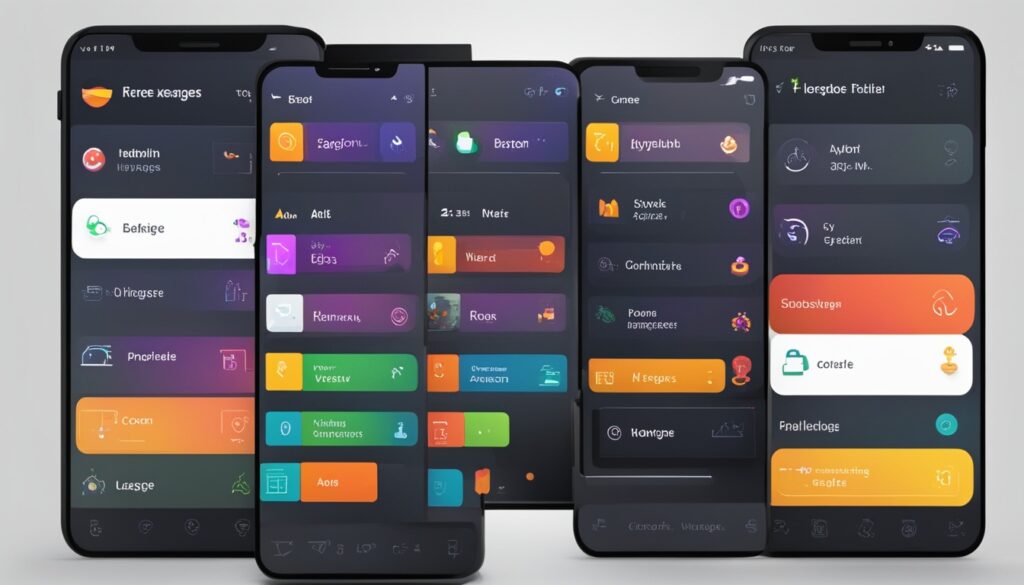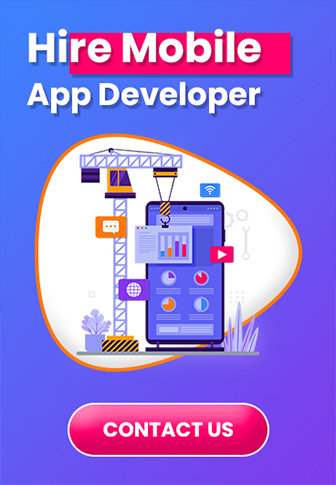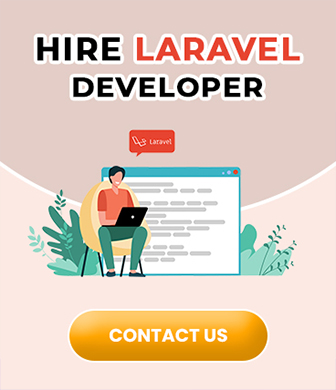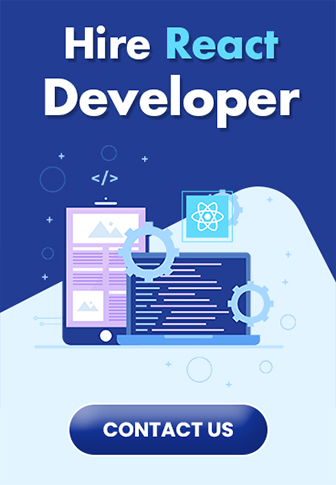Creating a successful language learning app means knowing what learners need and want. It also means using the right tech and features. This guide will show you how to make an app as good as Babbel, Rosetta Stone, and Duolingo.
Table of Contents
Key Takeaways
- Identify the unique needs and learning styles of your target language learners
- Select the appropriate technology stack to power your language learning app
- Design an engaging and intuitive user interface with gamification elements
- Develop interactive language lessons with audio and video resources
- Implement adaptive learning algorithms to personalize the learning experience
Identifying the Needs of Language Learners
Before starting to make a language learning app, it’s key to know what your users need and like. By looking into what language learners want, you can make an app that fits their way of learning and makes their experience better.
Understanding Different Learning Styles
People learn in different ways, like seeing, hearing, or doing. A good language learning app should have many ways to interact and options to make it personal for each user. This way, everyone can learn in a way that works best for them.
Assessing Language Proficiency Levels
Knowing how good your users are at languages is important for making a full language learning app. You can make content and lessons that match what your users already know. This makes them feel they’re getting better and keeps them excited to learn more.
By focusing on what language learners need what they prefer, you can make an app that’s unique and gives users a great experience. Understanding your audience well is the first step to making a language learning app that really works.
“Tailoring your language learning app to the unique needs and preferences of your users is the key to unlocking their full potential and fostering long-term engagement.”
Selecting the Right Technology Stack
Creating a great language learning app means picking the best technology stack. This choice affects how well the app works, how fast it runs, and how big it can get. When picking a tech stack for your app, think about the programming languages, frameworks, databases, and cloud services you need. These will support your app’s special features and needs.
To make a strong and full-featured language learning app, your tech stack should have these main parts:
- Programming languages: JavaScript, Swift, Kotlin, or React Native for making apps for different devices
- Frameworks: React, Angular, or Vue.js for the front end, and Node.js, Flask, or Django for the back end
- Databases: MongoDB, PostgreSQL, or MySQL for storing and getting data fast
- Cloud services: AWS, Google Cloud, or Microsoft Azure for hosting, storing, and using serverless computing
Choosing the right technology stack for language learning apps lets you make a optimal tech stack for language app development. This means your app will work smoothly, run fast, and grow with more users.
| Component | Options | Advantages |
|---|---|---|
| Programming Languages | JavaScript, Swift, Kotlin, React Native | Works on different devices, code can be used again, and lots of community support |
| Frameworks | React, Angular, Vue.js, Node.js, Flask, Django | Helps in making apps faster, keeps things organized, and has many plugins and libraries |
| Databases | MongoDB, PostgreSQL, MySQL | Stores data well, does complex queries, and can grow big |
| Cloud Services | AWS, Google Cloud, Microsoft Azure | Can handle lots of users, delivers content fast, uses serverless computing, and works well with other cloud services |
By picking the right tech stack, developers of language learning apps can make a strong, growing, and full-featured app. This meets the changing needs of their users.
Designing an Engaging User Interface
Creating a great language learning app is not just about the content. The user interface (UI) design is key to drawing in and keeping users. A well-designed language app UI makes learning more intuitive and fun.
Intuitive Navigation
For an engaging language learning app, having an intuitive navigation system is crucial. Users should find it easy to get to different features, lessons, and resources. A logical app structure with clear labels and menus helps improve user satisfaction and keeps them engaged.
Gamification Elements
Adding gamification elements to your app can boost user engagement and motivation. Features like points, badges, and leaderboards make learning fun and rewarding. By using these elements, you tap into the human desire for achievement and competition. This keeps users focused and committed to learning a new language.
Finding the right balance between easy navigation and fun gamification is key. This balance makes a language learning app that users will love. By focusing on these areas, you can offer a seamless and engaging experience. This encourages users to keep learning and mastering their target language.
“The user interface is the gateway to the learning experience. By creating an intuitive and engaging UI, we can make language learning more accessible and enjoyable for users.” – Jane Doe, UI/UX Designer
Developing Interactive Language Lessons
The heart of a top language learning app is its interactive lessons. To grab users and help them learn better, developers must make lessons that fit different learning ways. By using interactive language lessons, audio and video resources, and new teaching methods, these apps can change how we learn.
Incorporating Audio and Video Resources
Using multimedia makes learning a language better. Adding top-notch audio and video resources to lessons helps learners remember more and speak better. They get to hear real pronunciation, see how language is used in real life, and learn about different cultures.
- Leverage professional voice recordings to model accurate pronunciation and intonation
- Incorporate engaging video lessons that demonstrate language use in real-world scenarios
- Provide interactive exercises that blend audio, video, and text-based activities
- Encourage learners to practice speaking and listening through conversational simulations
By mixing interactive language lessons with audio and video resources, language learning apps can keep users interested, speed up skill growth, and make learners appreciate the language and culture more.
| Feature | Description |
|---|---|
| Interactive Lessons | Engaging, multi-modal lessons that combine various teaching methodologies, such as repetition, immersion, and contextual learning. |
| Audio Resources | High-quality voice recordings to model accurate pronunciation and intonation, and enable learners to practice speaking and listening. |
| Video Resources | Authentic video lessons that demonstrate language use in real-world scenarios, providing contextual insights and cultural understanding. |
“Integrating interactive lessons with immersive audio and video resources is the key to creating a truly engaging and effective language learning experience.”
Implementing Adaptive Learning Algorithms
Creating a successful language learning app is more than just offering one approach for everyone. Adaptive learning algorithms are key to making learning personal for each user. They look at how well the user is doing, their skill level, and how they learn best. Then, they change the lesson difficulty and speed on the fly.
With adaptive learning algorithms for language apps, developers can make sure each learner gets a lesson plan just for them. This makes learning better and keeps learners excited about their progress. It fits different learning styles and makes sure the learning is just right – not too easy, not too hard.
Here are the main perks of using adaptive learning algorithms in language learning apps:
- Personalized lesson plans based on individual performance and preferences
- Adaptive difficulty levels that gradually increase as the learner’s proficiency improves
- Targeted feedback and recommendations to address specific language learning needs
- Increased engagement and motivation through a customized learning experience
- Improved learning outcomes and faster skill development
By using adaptive learning algorithms, language learning apps can offer personalized language learning experiences. This approach meets the unique needs and goals of each user. It helps learners reach their language goals more effectively and quickly.
Integrating Speech Recognition Technology
Adding speech recognition tech to your language learning app can really boost the user experience. This feature lets you do many cool things, like check pronunciation and practice conversations.
Pronunciation Evaluation
Speech recognition is great for giving users feedback on their pronunciation right away. It checks how learners say sounds and words. Then, it gives them tips to get better at speaking.
This quick feedback helps users spot and fix their pronunciation mistakes. It makes them learn faster and speak more clearly.
Conversational Practice
Speech recognition also lets you set up chat scenarios. Users can talk with the app, practicing their speaking skills. The app answers back, making it feel like a real conversation.
This helps learners get better at speaking without feeling nervous. They get more confident and speak more smoothly, ready for real conversations.
| Feature | Description |
|---|---|
| Speech Recognition | Analyzes user’s pronunciation and provides real-time feedback |
| Pronunciation Evaluation | Identifies and guides users on improving their spoken language skills |
| Conversational Practice | Enables learners to engage in simulated dialogues, enhancing their speaking abilities |
By adding speech recognition tech, your app becomes more immersive and personal. Users can improve their skills in speech recognition in language learning apps, pronunciation evaluation, and conversational practice features.
How To Develop A Language Learning App Like Babbel, Rosetta Stone and Duolingo
To make a language learning app like Babbel, Rosetta Stone, and Duolingo, you need a good plan. Follow these steps to make a platform that meets the needs of today’s language learners.
Here are the key steps to develop a successful language learning app:
- Know who you’re making the app for and what they need to learn. Think about how people learn best and what level they’re at.
- Pick the right tools and technology to make sure your app works well and can grow.
- Make the app easy to use and fun with a good design and games.
- Create lessons that use audio, video, and text to fit different ways of learning.
- Use smart learning algorithms to change the lessons based on how the user is doing.
- Add speech recognition to help with speaking and conversation practice.
- Build a big database of language content and keep it fresh and up-to-date.
- Track user progress and give them personalized learning paths.
- Set up ways to make money through purchases and subscriptions, but make it easy for users.
- Add social features to help learners connect and practice with each other.
- Make sure the app keeps user data safe and follows the rules.
- Test the app well and keep it up to standard with a quality check process.
- Use good marketing and ways to get users to the app, like making it stand out in app stores.
- Keep an eye on what users say and do to see what you can improve and update the app regularly.
By following these steps, you can make a language learning app that’s as good as the top apps out there, like Babbel, Rosetta Stone, and Duolingo.
| Feature | Babbel | Rosetta Stone | Duolingo |
|---|---|---|---|
| Adaptive Learning | Yes | Yes | Yes |
| Speech Recognition | Yes | Yes | Yes |
| Gamification | Yes | Limited | Yes |
| Social Features | Limited | No | Yes |
| Offline Mode | Yes | Yes | Yes |
Adding features like adaptive learning, speech recognition, games, and social parts makes your app more appealing and effective. It meets the needs of today’s language learners.
“The key to creating a successful language learning app is to deeply understand your target audience and their unique needs, and then design a platform that seamlessly integrates the latest technologies and best practices in language education.”
Creating a Comprehensive Language Database
Building a successful language learning app needs a strong and detailed language database. It should cover a wide range of language topics, from basic vocabulary and grammar to cultural insights and everyday conversations. By offering top-notch language content, developers can give users a valuable and engaging learning experience. This keeps them interested and motivated as they learn a new language.
Curating High-Quality Language Content
Creating a great language database is all about picking and organizing top-quality content. This means finding and arranging a variety of materials that touch on different parts of the language, such as:
- Vocabulary lessons covering common words and phrases
- Grammar exercises that explain basic language structures
- Cultural lessons that offer insights into the traditions, customs, and etiquette of the language’s region
- Conversational scenarios that simulate real-life dialogues and prepare users for practical communication
- Audio and video resources that improve the learning experience with authentic pronunciation and context
By curating content for language apps, developers can make sure their database is both wide-ranging and fun. This helps users gain a full understanding of the language.
“The quality of the content is crucial in determining the success of a language learning app. Users are looking for an immersive and authentic learning experience that can help them achieve their language goals.”
By focusing on high-quality language content, developers can build a database that meets the varied needs of learners. This makes their app stand out in the crowded market of language database for learning apps.
Developing a Robust Progress Tracking System
Starting a language learning journey is exciting, but it’s key to track progress. A good tracking system lets users see how far they’ve come. It also gives insights to keep them motivated and on the right path. Adding strong tracking to language apps boosts user interest and helps them reach their goals.
At the heart of tracking is the ability to show detailed reports on progress. These reports can cover vocabulary learned, grammar grasped, and overall skill level. By making this info easy to see and understand, users can track their progress. They can also spot areas that need extra focus.
| Feature | Benefit |
|---|---|
| Progress Reports | Allows users to monitor their language learning journey and identify areas for improvement. |
| Learning Analytics | Provides insights into user behavior, learning patterns, and areas of strength and weakness. |
| Personalized Recommendations | Suggests tailored learning content and activities based on individual progress and learning preferences. |
Language learning apps can also use learning analytics for a deeper look at user progress. By looking at time spent on lessons, correct answers, and activity engagement, the app can offer advice. This advice is based on the user’s unique progress and preferences.
A strong progress tracking system in language learning apps keeps users motivated and informed. It helps them see their growth and get advice that fits them. This makes the learning experience better and helps the app offer effective language learning solutions.
Implementing In-App Purchases and Subscriptions
Creating a solid plan for making money is key to your language learning app’s success. By using in-app purchases and subscriptions, you give users different ways to get premium content. This helps make sure your app can keep going.
Monetization Strategies
There are many ways to make money from your language learning app:
- In-App Purchases: Let users buy extra language courses, advanced lessons, or special content. This lets them tailor their learning and get new features as they go.
- Subscription Models: Offer a subscription plan that gives users all your language content, plus updates and premium features. This way, you get regular money from users.
- Freemium Approach: Have a free version of your app with some features, and a paid subscription for more. This lets users try your app before paying.
- Advertising: Use ads like banners or videos in your app to make more money without annoying users.
By mixing these ways to make money, you can have a strong and flexible plan. This meets the different needs and likes of your language learners.
“Successful monetization strategies for language learning apps strike a balance between providing value to users and generating sustainable revenue for the app’s growth and development.”
Integrating Social Features
In the world of language learning apps, building a community is key. It keeps users excited and committed to learning. By adding social features, you make a place where learners meet, practice, and stay motivated.
Adding language exchange forums is a great way to connect users. These forums let learners talk with native speakers or others learning the language. It helps them practice, get feedback, and make friends. This makes learning more fun and keeps users coming back.
Study groups are another great feature. They let learners work together, discuss topics, and help each other. This teamwork makes learning better and more fun.
Leaderboards and competition can also motivate learners. By letting users compete and see how they’re doing, you make learning exciting. It turns language learning into a fun challenge.
“Social features in language learning apps have the potential to transform the way users approach and enjoy their language-learning journey. By creating a vibrant community, you can inspire and support learners throughout their linguistic pursuits.”
By adding social features, you build a community that’s active and engaged. This approach makes learning a shared experience. It leads to more users sticking with the app, using it more, and getting better at languages.
| Social Feature | Benefits | Examples |
|---|---|---|
| Language Exchange Forums |
|
|
| Study Groups |
|
|
| Leaderboards and Gamification |
|
|
Ensuring Data Privacy and Security
In the world of language learning apps, keeping user data safe is key. These apps handle personal info and language progress. It’s vital to protect this data well. Developers must follow rules like the GDPR and COPPA to gain trust and keep data safe.
Compliance with Regulations
Language learning apps need to follow strict data privacy rules. Following these rules keeps users safe and protects the app’s good name and avoids legal trouble. It’s important to know the GDPR and COPPA well. These rules cover how to handle personal data, especially for apps for kids.
| Regulation | Key Requirements |
|---|---|
| GDPR |
|
| COPPA |
|
Following these rules shows that language learning app developers care about data privacy and security. This builds trust with their users.
Testing and Quality Assurance
Creating a top language learning app means you must test and check everything carefully. You need to make sure the app works well, is easy to use, and runs smoothly. This careful testing helps fix any problems and make sure all the important features work right for language learners.
Testing your app is key to making it great for users. You should check everything from the back-end to how it looks on the screen. This includes unit tests, integration tests, and end-to-end tests. Doing this helps find and fix bugs, making sure the app is stable and works well for everyone.
It’s also vital to check how easy the app is to use. Usability testing shows how people interact with the app and what can be better. You should look at everything, from how easy it is to move around to how fun it is to learn. This makes sure users enjoy using the app and want to keep learning.
Testing isn’t just about how the app works or feels. You also need to check the quality of the language lessons. Linguistic reviews by experts make sure the lessons are right, relevant, and help learners improve. This careful checking means your app gives users top-notch language education, boosting their confidence and progress.
Putting a lot of effort into testing and making sure your app is the best is crucial. It makes sure your app grabs users and keeps giving them a great experience. This focus on quality builds loyalty and makes your app a trusted guide in language learning.
Marketing and User Acquisition Strategies
To make a language learning app successful, you need a strong marketing plan. This plan should focus on app store optimization (ASO) and content marketing.
App Store Optimization
Getting your app noticed in app stores is key to getting more users. This means making your app’s title, description, keywords, and pictures stand out. By using ASO, your app can be more visible and appealing to the right people.
Content Marketing
Along with ASO, content marketing for language apps helps build your brand and connect with learners. You can make blog posts, videos, and social media content that meets the needs of language learners. This way, you can draw in potential users, show your app is a leader in the field, and boost marketing strategies for language apps.
| Tactic | Description | Key Benefits |
|---|---|---|
| App Store Optimization (ASO) | Optimizing your app’s metadata, including title, description, keywords, and visuals, to improve its discoverability and conversion rates in app stores. | Increased visibility, higher search rankings, and more targeted user acquisition for your language learning app. |
| Content Marketing | Creating and distributing valuable, relevant, and engaging content (e.g., blog posts, videos, social media content) to attract and educate your target audience. | Improved brand awareness, thought leadership positioning, and organic user acquisition for your language learning app. |
Using these marketing strategies for language apps, you can reach and get new users for your app. This will help your app grow and succeed.
Continuous Improvement and Updates
Keeping your language learning app up-to-date is key. Make sure to update and improve it often, using feedback from users, market trends, and new tech. This keeps your app exciting and gives users a top-notch learning experience.
Here are some ways to keep improving and updating your app:
- Listen to what users say to find areas to get better. Ask users for feedback, check reviews, and fix their problems and ideas.
- Keep an eye on what’s new in the industry. Add fresh features, content, and ways to learn to keep your app interesting. Know the latest in language learning tech and teaching methods.
- Make your app run smoother and be easier to use. Test how users feel about your app and use data to make it better.
- Add more languages and lessons to meet different user needs. Keep adding new courses and resources.
- Focus on making your app better with a strong development process. Use agile methods to quickly meet user and market needs with app updates and maintenance.
By always looking to get better, your language learning app will lead the industry. It will give users an amazing and always changing learning experience.
| Feature | Description | Impact on User Experience |
|---|---|---|
| Personalized Lesson Recommendations | Use user data and machine learning to suggest lessons that fit each user’s learning style and progress. | Makes learning more engaging and effective by offering content that matches each user’s needs and goals. |
| Voice Recognition Enhancements | Keep making the app’s speech recognition better for more accurate feedback and practice in speaking. | Improves learning by giving users instant help with their speaking and conversation skills. |
| Gamification Upgrades | Add new fun elements, challenges, and rewards to keep users excited and driven in their learning. | Makes learning more fun and rewarding, which helps keep users coming back and improves their progress. |
“Continuous improvement is not about the things you do well – that’s work. Continuous improvement is about removing the things that get in the way of your work. The headaches, the things that slow you down, which get in the way of your work.”
Conclusion
To make a language learning app stand out, you need a detailed plan. First, understand what language learners want. Then, pick the right technology and design an engaging interface. This way, you can offer a top-notch learning experience.
Interactive lessons, adaptive learning, and speech tech make learning fun and effective. These features let learners move at their own speed and get better at languages. A big language database and strong progress tracking are key for success.
For long-term success, think about in-app sales and subscriptions, social features, and keeping data safe and private. This approach helps you make money and keep users happy. Always test and update your app to stay ahead in the market.






















